Review: 2015 Volkswagen E-Golf (With Video)

Because I live in California, it seemed only fitting that my first taste of the new Golf arrived in electric form: the 2015 VW e-Golf. (Why e-Golf? Because “Golfe” just sounded silly.) The Golf isn’t just the first Volkswagen EV in the US, it’s also the first VW built on the new MQB platform which promises reduced weight and lower development costs. While MQB isn’t a dedicated EV platform like Nissan’s LEAF, it was designed to support electrification from the start rather than being converted like the Fiat 500e. While that may sound like a quibble, the difference is noticeable as the e-Golf feels like a regular VW that happens to be electric. The e-Golf also demonstrates just how rapidly EVs have evolved since the LEAF launched in 2010.
Exterior
Volkswagen has always been a company that prefers restrained elegance when it comes to design and the new Golf is no different. While some described the look as boring, I generally appreciate design evolution more than design revolution because the latter leads to products like the Aztek. The downside to VW’s design evolution is that the Golf doesn’t look all that different from the last Golf, but VW owners tell me that’s how they like it. Park it next to the last VW hatch and you will notice a difference. The 2015 model is longer, wider and lower than its predecessor with a longer hood and a shorter front overhang. The result is a more grown-up hatch than ever before that also schleps more stuff than ever before.
For EV duty, VW swaps in their first US-bound LED headlamps, and (according to a product announcement released when we had the e-Golf) will swap them back out if you opt for the new starting trim of the e-Golf which is coming soon. We also get a revised DRL strip of LEDs curving around the front bumper that gives the electric version a distinctive look in your rear-view mirror. Finishing off the transformation are blue accents here and there, EV specific wheels and unique badging. From a functional standpoint, the electrically heated windshield (ala Volvo and Land Rover) helps reduce energy consumption by heating the glass directly instead of heating the air and blowing it on the glass.
Interior
Changes to the new interior are as subtle as the exterior. It was only after sitting in a 2012 Golf that I realized that parts sharing appears to be somewhere near zero. Although the shapes are similar, everything has been tweaked to look more cohesive and more up-scale. The console flows better from the climate controls, infotainment screen and knick-knack storage all the way to the armrest. The dashboard design is smoother and more Audiesque and the door panels have improved fit and finish with slightly nicer plastics. Keeping in mind that the Golf competes with the Hyundai Elantra GT, Ford Focus, Mazda3, Chevy Sonic, and Fiat 500L, this is easily the best interior in this class.
When it comes to the e-Golf things get murky. Since most auto companies have just one EV model, the electric Golf competes with a more varied competitive set spanning from the Spark EV and 500e to the BMW i3 and Mercedes B-Class Electric. In this competitive set, the VW still shines with an interior that isn’t that far off the B-Class or the i3 in real terms. The only oddity here is that the e-Golf does not offer leather in any configuration. The new base model gets cloth seats which are comfortable and attractive but the top end trim we tested uses leatherette which is attractive but doesn’t breathe as well as leather or cloth. Breathability is a problem the Spark’s leatherette seats also suffer from and is especially important in an EV where you frequently limit AC usage to improve range. Kia’s Soul EV is a stand-out in this area by offering real leather and ventilated seats which consume less power than running the AC.
Infotainment
The redesign of the Golf includes a refresh of VW’s infotainment lineup. Sadly however, this is the one area where revolution would have been preferable to evolution. The VW infotainment software, even in our up-level unit with nav, still lags behind the competition. The unit features expanded voice commands, finger gestures (like scrolling), snappier navigation software and a proximity sensor to clean up the interface when your digits aren’t near the screen. Most of the system’s graphics have been improved and the media interface is more attractive than before. Sadly however the system still lacks the ability to voice command your media library and the screen is notably smaller than the huge 8-inch screen in the Kia Soul.
Instead of giving EV models a funky disco-dash like most EVs, VW keeps the four-dial analog cluster and monochromatic multi-information display with a few changes. Instead of a tachometer we get a sensible power meter showing how much oomph you are commanding. Instead of an engine temperature gauge VW drops in an “available power” gauge that tells you how much power you can draw from the battery pack. In cold weather, or when the battery is too hot or too cold the discharge rate will slow.
I appreciate the simplistic gauge cluster, it’s classier than disco-dash in the LEAF while displaying essentially the same information. On the downside, the rest of the e-Golf’s systems lack the EV-specific features we have come to expect in EVs and hybrids. The extent of the EV information in the infotainment system is a single screen that shows your range. Most of the competition provides insight into how much energy your vehicle’s systems are consuming, how much additional range you’d get by turning your AC off or how long your battery would take to charge on various power sources. In fact the only way you’d know how long the e-Golf would take to charge is by plugging it in and reading the display that flashes the time to charge briefly. For more information VW directs you to their smartphone app, but those looking for a more integrated solution should look elsewhere.
Drivetrain
Powering the e-Golf is a 115 HP synchronous AC motor capable of delivering 199 lb-ft of torque at low RPMs. That’s 55 fewer ponies, but the same amount of torque as the regular Golf’s 1.8L turbo engine. Logically the performance is lazy when compared to the turbo Golf thanks as much to the single-speed transmission as to the added weight of the e-Golf’s battery pack. 60MPH happens in a Prius-like 10.03 seconds, about 2-seconds slower than the TSI. Because the MQB platform was designed with EVs and hybrids in mind, the large 24.2 kWh (estimated 21.1 kWh usable) battery fits entirely under the vehicle with no intrusion in the passenger compartment and little overall compromise in terms of cargo capacity.
Early reports indicated that VW was going to liquid cool the battery pack like GM does in their EVs but the production e-Golf uses a passive battery cooling system instead. VW engineers tell us that the lithium nickel manganese cobalt oxide (NMC) cells from Panasonic lend themselves well to packs of this nature and it ultimately helps them reduce weight and complexity. Like most manufacturers VW will warrant the pack for 8 years and 100,000 miles against capacity drop larger than 30%. This means that your EPA range starts at 83 miles and would have to drop to around 53 miles in that window to get it repaired or replaced.
Charging is always a concern with EV shoppers so VW dropped in one of the faster chargers available (7.2kW) which can charge the battery in three hours if you have an appropriate 240V EVSE. Should you have access to one of the new SAE DC Fast Charge stations (also known as CCS), you can zip from 0-80% in under 30 minutes. On the downside, finding a CCS station proved a little tricky in the SF Bay Area where the older competing CHAdeMO standard is more common by at least 5:1. On the up-side if you can find a station it’s unlikely to be occupied since there are few vehicles on the road that support the new connector.
According to VW, our e-Golf tips the scales at a svelte 3,391 lbs with 701 of that coming from the battery pack. For those that are counting, that’s only 300lbs heavier than the carbon fiber and aluminum BMW i3 REx which is significantly more expensive and actually has a smaller battery and 359lbs heavier than the Golf TSI. I should also mention that the Golf also scores better in crash tests than BMW’s light weight EV. In addition to being light for an EV, the weight is more evenly distributed than in the gasoline Golf. VW has not released exact details, but the pre-production Golf EV had a perfect 50:50 weight balance and that’s likely true for the 2015 e-Golf as well.
Although VW puts 205-width low rolling resistance tires on the e-Golf, it actually handles better than the base Golf TSI. Some of that is because the TSI gets 195s in base form, but the lower center of gravity and the improved weight balance play a large role as well. This means that unlike other EV conversions, the electric Golf isn’t the least fun trim, it actually ends up middle of the pack between the base Golf and top end TSI and TDI trims. The improved balance is obvious in neutral handling where the EV plows less than the base Golf. The added weight has a positive impact on the ride which seemed a hair more refined than the TSI a dealer lent for comparison. Steering is typical modern VW: moderately firm and accurate but lacking any real feedback.
Pricing on the e-Golf initially started and ended at $35,445 due to VW’s one-trim strategy. If you qualify for the highest tax incentives available (state and local) the price drops to an effective $25,445. That’s only a hair more than a comparable gasoline model (the e-Golf SEL Premium’s feature set slots between the TSI S and TSI SE model) but higher than many of the recent mass market EVs. To solve this VW announced the arrival of the “Limited Edition” which cuts $1,995 from the price tag by de-contenting. Cloth seats replace the leatherette (I actually think that’s an upgrade), the LED headlamps are dropped and steel wheels replace the 16-inch alloys. None of those changes are a deal-breaker for me, unfortunately however the last thing on the chopping block is the heat pump. Heat pumps are much more efficient than resistive heating elements so this will mean reduced range in colder climates.
The e-Golf is less of a compromise than the 4-seat Spark and a better deal than the 4-seat i3. Nissan’s LEAF provides a little more passenger and cargo room for less, but the trade-offs include lackluster handling, fewer features and a much slower charger. When cross-shopping Fiat’s 500e you realize just how large the Golf has grown over the years. As you’d expect in a segment that is evolving this rapidly, the toughest competition is found in the other new model: the 2015 Kia Soul EV. Priced from $33,700-35,700 (before incentives) the Soul is slightly more expensive than the VW but you get considerably more for your money. The delta is most pronounced in the Soul EV + which gets real leather, cooled seats, a heated steering wheel, power folding mirrors, an 8-inch touchscreen, and about 20% more battery capacity for $225. Highlighting Kia’s deft hand at cutting the right corners, you will notice that the Soul forgoes LED headlamps, the heated windscreen and has a slightly slower charger. As impressive as the e-Golf’s curb weight is, the Soul EV manages to be a hair lighter at 3,289lbs despite the bigger battery, this weight reduction and deeper gearing allow the Soul EV to scoot to 60 one second faster. This leaves me with a split decision, the e-Golf is the better car but the Soul is the better EV with a longer range, EV focused infotainment software and niceties like the cooled seats and heated steering wheel that extend range by reducing your HVAC consumption. If VW adds a third model sporting cooled seats, real leather and drops back in the gas-Golf’s power seats, they’d have a solid alternative to the Soul EV and even the Mercedes B-Class. Just be sure to check with your tax professional before depending on those EV credits and rebates.
Volkswagen provided the vehicle, insurance and a charged battery for this review.
Specifications as tested:
0-30: 3.44 Seconds
0-60: 10.03 Seconds
1/4 Mile: 17.2 Seconds @ 82 MPH
Average Economy: 4.3 Mi/kWh

More by Alex L. Dykes
Latest Car Reviews
Read moreLatest Product Reviews
Read moreRecent Comments
- Rochester When I was young, a number of girls I dated wanted to own a Jeep. I didn't understand (and don't like them myself), but it was certainly something. So good for Jeep leaning into that.
- 3SpeedAutomatic Elon took his eye off the ball while pre-occupied with "X" (formerly Twitter). Now, Tesla is coming around and biting him on the arse!!In the car business, you need to keep you finger on the pulse. Momentum will only carry you so far. If in doubt, think Lordstown and Fisker. He thinks technology will solve his problems. However, Telsa has moved from premier product to commodity with other manufacturers entering his exclusive domain. Time for Elon to fly back to Tesla HQ and come up with a long term plan. 🚗🚗🚗
- Irvingklaws Anymore seems I want a color that is not black, white, red, or some shade of silver/gray. Though I coveted them when I was younger, I also seem to have developed an aversion to all-black interiors. I have a deep negative reaction to any vehicle identifying as "triple black". Don't even get me started on black wheels...I'm not the only one. We're looking to replace my wife's silver CX-5 and one of her few non-negotiable prerequisites is that it be "a color" not in the aforementioned list. It's looking like a Cascade Green Forester with a light gray interior is in her future.
- Bd2 I dig it, Pure Pazaak!
- 3-On-The-Tree My C6 is all blacked out, the rims are matte black and interior all black with no contrast. I was never a fan of chrome rims and lots shiny chrome/silver trim etc.



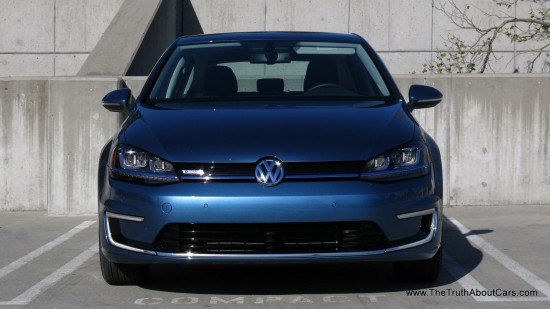
























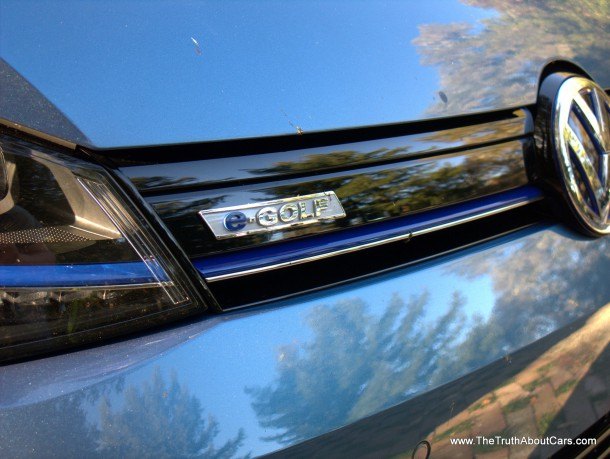






























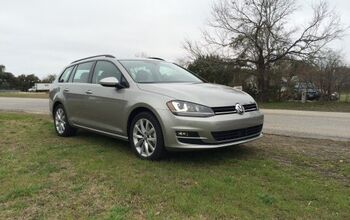
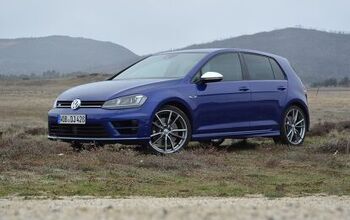
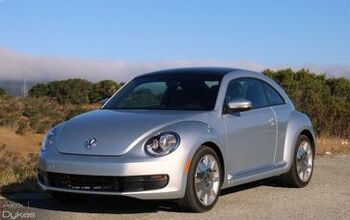
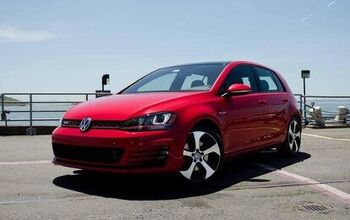










Comments
Join the conversation
A quick note regarding the Leaf's handling. Alex described the handling as lackluster, but different trim levels and model years of the Leaf have different handling characteristics. I have a 3,328 lb Leaf SL model equipped with 215/50 17s. While the handling isn't as good as my PSS-9 equipped E36, it's feels like an Elise next to our poster child of lackluster handling 2nd gen Prius. In fact, the road holding is anything but lackluster and closer to the E36 than the Prius. It's actually an important feature in an EV since it gives you the ability to maintain speed, minimizing acceleration and deceleration which extends your range. I haven't driven an eGolf yet and on my only drive of a entry level spec Leaf S featured a known speed trap that thwarted my attempt to push it to it's limits, so I really can't compare those to the SL. However, the 215/50's and the low center of gravity definitely give you road-holding ability that I think is beyond what you'd get with the average mid-sizer.
"suffer from and is especially important in an EV where you frequently limit AC usage to improve range." I refuse to deal with such problems in 2015. "Yeah I'll drive to the meeting, but we can only use AC half the trip. You want it on the way there or on the way back?" Horrible!